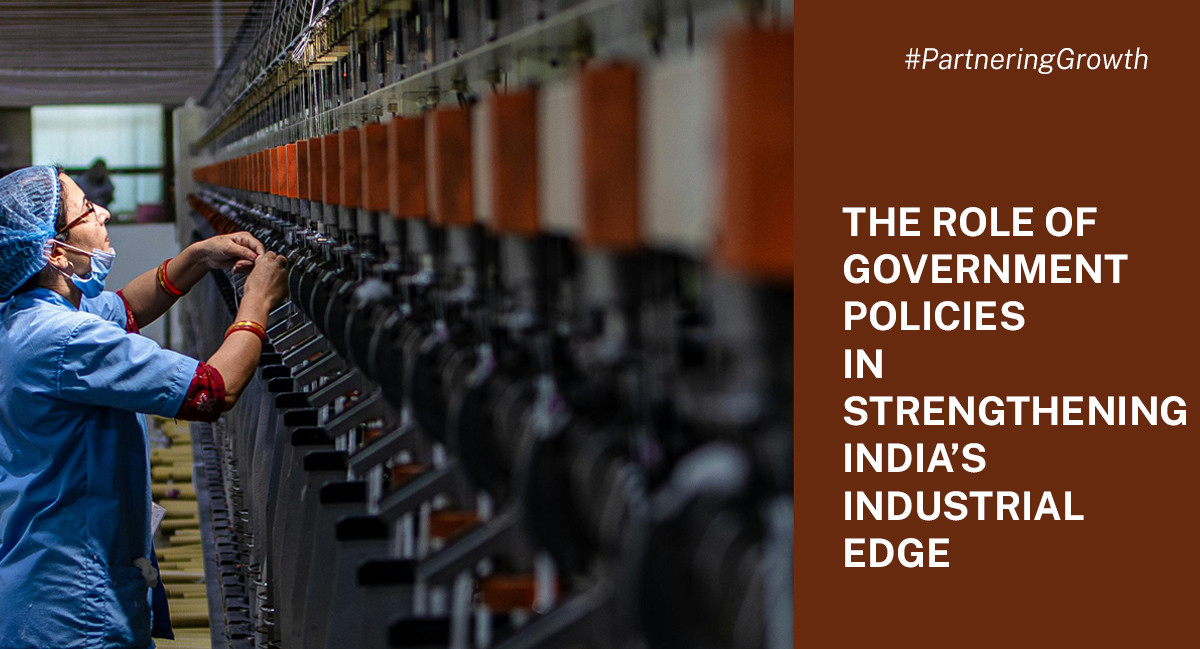


India’s industrial sector has been witnessing a steady transformation, driven not only by domestic demand but also by strategic government policies. Initiatives like Make in India, the National Capital Goods Policy, and Production-Linked Incentive (PLI) schemes have been instrumental in enhancing the competitiveness of Indian manufacturing. These policies are shaping India’s industrial landscape by promoting investment, technology adoption, and global integration.
Make in India: Driving Manufacturing Competitiveness
Launched on September 25, 2014, the Make in India initiative was conceived to position India as a global manufacturing hub. Its objectives were clear: to facilitate investment, foster innovation, build world-class infrastructure, and make India a hub for manufacturing, design, and innovation.
The initiative has since become a cornerstone of India's industrial strategy, attracting investments, creating jobs, and enhancing the country's manufacturing capabilities. The success of Make in India is evident in the strides made in sectors like electronics, textiles, and automobiles, where India is emerging as a significant player on the global stage.
National Capital Goods Policy: Building Industrial Foundations
The National Capital Goods Policy, launched in 2016, aimed to enhance the domestic production of capital goods, reduce dependency on imports, and improve the competitiveness of the manufacturing sector. The policy envisaged increasing the production of capital goods from approximately ₹2.3 lakh crore in 2014-15 to ₹7.5 lakh crore by 2025, while raising direct and indirect employment from 8.4 million to around 30 million. It also aimed to increase exports from 27% to 40% of production and raise the share of domestic production in India's demand from 60% to 80%.
To achieve these targets, the policy recommended increasing the budgetary allocation for the existing 'Scheme on Enhancement of Competitiveness of Capital Goods' and expanding its scope to include components for technology, skills, capacity building, user promotional activities, green engineering, energy, advanced manufacturing, and cluster development.
Production-Linked Incentives and Sectoral Support
Launched on April 1, 2020, the PLI Scheme was a strategic leap toward self-reliance, targeting industries like electronics, textiles, pharmaceuticals, and automobiles. The initiative offered financial incentives tied directly to measurable outcomes such as higher production and incremental sales. The scheme was notified on April 1, 2020, with guidelines released on June 1, 2020. It extends an incentive of 4% to 6% on incremental sales for a period of five years subsequent to the base year.
The PLI schemes have attracted significant investments across various sectors. For instance, the PLI scheme for the automobile and auto component industry, launched in September 2021 with a budget of ₹25,938 crore, has attracted ₹29,576 crore in cumulative investment and created 44,987 jobs as of March 2025.
Impact on Competitiveness
These policies have collectively contributed to:
1. Increased Investment: Both domestic and foreign investors are drawn to India’s structured incentives and supportive policies.
2. Technology Adoption: Firms are encouraged to invest in modern machinery and digital solutions.
3. Job Creation and Skill Development: Expanding industrial activities creates employment and enhances workforce capabilities.
4. Global Integration: Companies are better positioned to compete in international markets due to improved quality and efficiency standards.
What does the future behold?
The ongoing reforms, combined with emerging sectors such as renewable energy, electric vehicles, and advanced manufacturing, suggest that India’s industrial competitiveness will continue to rise. Continuous policy evolution, support for R&D, and investment in infrastructure will be crucial to maintaining momentum and ensuring sustainable growth.
Government policies have played a pivotal role in strengthening India’s industrial edge. By supporting investment, technology adoption, and workforce development, initiatives like Make in India, the National Capital Goods Policy, and PLI schemes are transforming India into a globally competitive manufacturing hub. Sustaining these efforts will be key to India’s long-term industrial and economic growth.